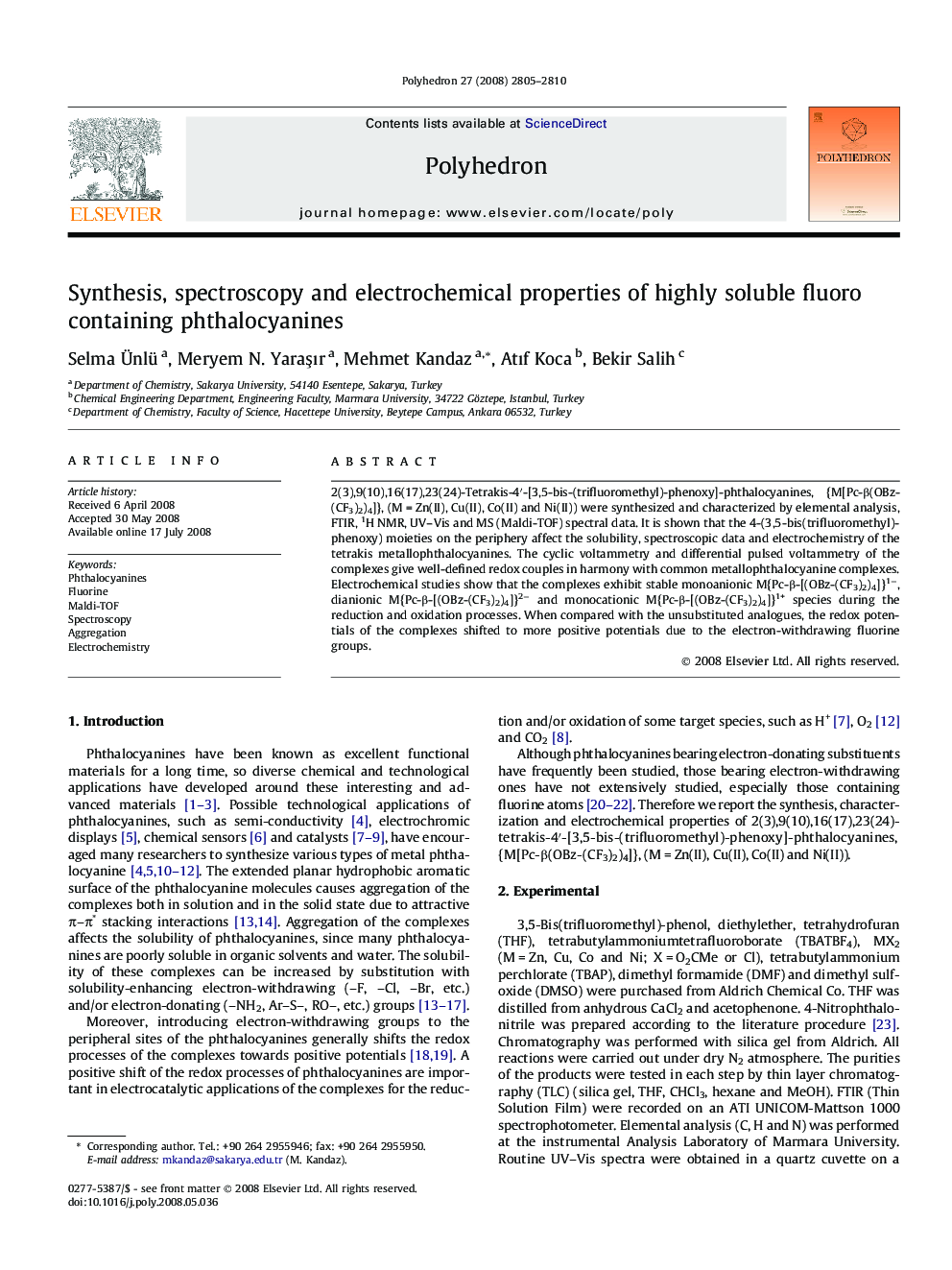| Article ID | Journal | Published Year | Pages | File Type |
|---|---|---|---|---|
| 1340343 | Polyhedron | 2008 | 6 Pages |
2(3),9(10),16(17),23(24)-Tetrakis-4′-[3,5-bis-(trifluoromethyl)-phenoxy]-phthalocyanines, {M[Pc-β(OBz-(CF3)2)4]}, (M = Zn(II), Cu(II), Co(II) and Ni(II)) were synthesized and characterized by elemental analysis, FTIR, 1H NMR, UV–Vis and MS (Maldi-TOF) spectral data. It is shown that the 4-(3,5-bis(trifluoromethyl)-phenoxy) moieties on the periphery affect the solubility, spectroscopic data and electrochemistry of the tetrakis metallophthalocyanines. The cyclic voltammetry and differential pulsed voltammetry of the complexes give well-defined redox couples in harmony with common metallophthalocyanine complexes. Electrochemical studies show that the complexes exhibit stable monoanionic M{Pc-β-[(OBz-(CF3)2)4]}1−, dianionic M{Pc-β-[(OBz-(CF3)2)4]}2− and monocationic M{Pc-β-[(OBz-(CF3)2)4]}1+ species during the reduction and oxidation processes. When compared with the unsubstituted analogues, the redox potentials of the complexes shifted to more positive potentials due to the electron-withdrawing fluorine groups.
Graphical abstract2(3),9(10),16(17),23(24)-Tetrakis-4′-[3,5-bis-(trifluoromethyl)phenoxy]-phthalocyanines, {M[Pc-β(OBz-(CF3)2))4]}, (M = Zn(II), Cu(II), Co(II) and Ni(II)) were synthesized and characterized by elemental analysis, FTIR, 1H NMR, UV–Vis and MS (Maldi-TOF) spectral data. It is shown that 4-(3,5-bis(trifluoromethyl)-phenoxy) moieties on the periphery affect the solubility, spectroscopic data and electrochemistry of the tetrakis metallophthalocyanines. The electrochemical measurements of the complexes represent well-defined redox couples in harmony with common metallophthalocyanine complexes.Figure optionsDownload full-size imageDownload as PowerPoint slide
